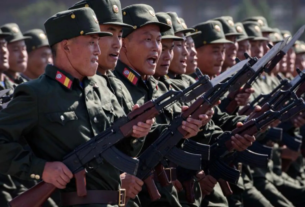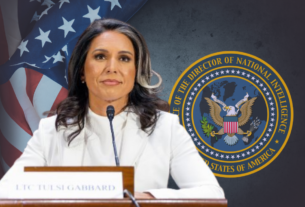The United Nations warns that up to six million people could die from HIV and AIDS if U.S. funding for global health programs is cut. The U.S. government provides billions in aid, supporting treatment and prevention efforts in many countries.
“Without this funding, millions will lose access to life-saving treatment,” a UN health official said. The warning follows concerns that U.S. budget cuts could impact the President’s Emergency Plan for AIDS Relief (PEPFAR).
PEPFAR has provided HIV treatment to over 20 million people since its launch in 2003. The program funds antiretroviral drugs, testing, and health services in low-income countries.
The U.S. remains the largest donor to global HIV programs. Cuts to funding could disrupt progress made in reducing infection rates and deaths.
Health experts say continued investment is critical. Many HIV patients rely on free or subsidized treatment provided through international aid.
“The fight against HIV is far from over,” a public health researcher said. Global agencies report that millions still lack access to necessary drugs and testing.
Sub-Saharan Africa remains the hardest-hit region. UNAIDS reports that over 25 million people in Africa live with HIV, with many depending on international aid.
U.S. lawmakers debate the future of HIV funding. Some support maintaining PEPFAR, while others push for domestic budget priorities.
The UN warns that reduced aid could lead to a resurgence of the epidemic. Past funding cuts in some regions have led to increased infection rates.
Health workers fear disruptions in drug supplies. Without steady funding, clinics struggle to maintain stocks of life-saving medicines.
“Every delay in treatment leads to more deaths,” a health official in Kenya said. Countries that depend on aid worry about the long-term effects of funding cuts.
Global HIV deaths have declined in recent years due to treatment access. Experts warn that progress could reverse if programs lose financial support.
Activists call on the U.S. government to continue funding. Advocacy groups argue that cutting aid could erase decades of progress.
Religious and conservative groups influence the funding debate. Some push for restrictions on programs that include contraception and sexual health education.
The Biden administration previously supported continued HIV funding. Under Trump’s leadership, foreign aid policies could shift.
International organizations seek alternative funding sources. Some governments and private donors increase contributions to fill potential gaps.
Countries receiving PEPFAR funding prepare for possible reductions. Governments explore local solutions to sustain HIV programs.
HIV prevention efforts also face challenges. Fewer resources for education and testing could increase new infections.
“The cost of inaction is too high,” a UNAIDS official said. Agencies urge world leaders to maintain support for global health initiatives.
Public pressure grows on U.S. policymakers. Advocates warn that cuts to HIV programs could lead to millions of preventable deaths.
Health organizations emphasize that continued funding benefits global stability. Preventing disease outbreaks reduces economic and security risks worldwide.
The UN continues diplomatic efforts to secure commitments. Long-term funding remains essential to controlling the HIV epidemic.
The future of U.S. funding remains uncertain. The final decision could determine the fate of millions relying on HIV treatment.




